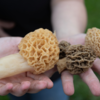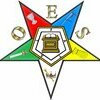The hooting season is upon us

Of all the things you associate with this time of year, the start of bird courtship in the outdoors probably isn’t one of them.
We’re nearing winter’s official start (Dec. 21), which means we’re several months away from hearing melodious calls of cardinals, robins and other well-known songbirds we hear in the warmer months of spring. However, it’s equally true that the multi-noted “hoot” you may hear on an evening walk is a clear indicator that the Ozarks’ annual cycle of avian romance is beginning.
Here, as is the case in many parts of the U.S.; great horned owls are the opening act of bird courtship. They are among North America’s earliest nesting birds. Nesting occurs in January or early February in Missouri, but this is preceded by a prolonged period of calling by the males. In this region, great horned owl “hooting” usually begins in December and, sometimes, as early as late November. While few people would describe these hoots as “bird songs,” they’re the equivalent of the calls made by many male songbirds in spring. They’re vocalizations of male owls that are either trying to show their health and robustness in the hope of attracting a female mate or are communicating territorial ownership to other males.
The great horned owl (Bubo virgianus) is a year-round resident and is the most common species of owl in this area. They reside in diverse habitats. They can be found in woodland areas and in relatively open areas. They inhabit both rural and urban areas.
The feathered tufts on a great horned owl’s head are not ears. Like most owls, a great horned owl’s ear openings are within its facial disc. The entire facial disc helps direct sound waves into the ear openings. In addition to having good hearing, great horned owls also have good vision. Serrations along the edges of their flight feathers also greatly reduce the noise of their flight.
The combination of these qualities makes great horned owls excellent hunters, which is a good thing for people. Among a great horned owl’s food items are mice, rats, squirrels, muskrats and other small animals that, on occasion, pose problems for humans.
Incubating eggs and keeping offspring warm when the calendar still says “winter” may seem problematic, but in the case of great horned owls, it has some advantages. For starters, great horned owls seldom build nests of their own, but instead utilize old hawks’ nests, heron nests, squirrel nests, hollow trees, old buildings or caves. While the early bird may not get a worm in winter, it definitely gets its choice of nesting sites. Getting an early start on nesting allows owls to occupy these spaces before other birds come along.
Also, an owl’s incubation period (up to 35 days) and the time it takes owlets to fledge (45 to more than 50 days) are lengthier than many smaller birds. Given that great horned owls require these longer periods of development, a nesting time during the warmer months of spring would simply not give young owls enough time to fully develop their hunting skills before winter months arrive and hunting becomes more challenging.
If you’re outside after dark, keep your ears open for the calls of great horned owls or other owl species that may be in the area. If you know owl nesting sites, you can also help by avoiding these spots as much as possible for the next few months so as to lessen the chance of accidental nest disturbance. More information about owls in Missouri can be found at mdc.mo.gov.
Francis Skalicky is the media specialist for the Missouri Department of Conservation’s Southwest Region. For more information about conservation issues, call 417-895-6880.
Please support The Stone County Republican & Crane Chronicle by subscribing today!
You may also like:








